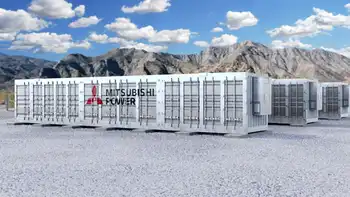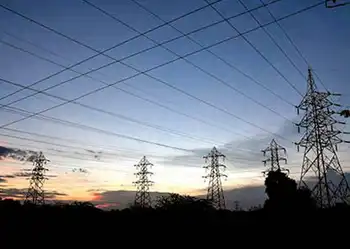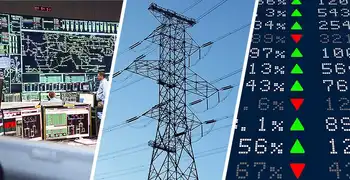China vies to be leader in electric vehicles
By New York Times
Electrical Testing & Commissioning of Power Systems
Our customized live online or in‑person group training can be delivered to your staff at your location.

- Live Online
- 12 hours Instructor-led
- Group Training Available
The goal, which radiates from the very top of the Chinese government, suggests that DetroitÂ’s Big Three, already struggling to stay alive, will face even stiffer foreign competition on the next field of automotive technology than they do today.
“China is well positioned to lead in this,” said David Tulauskas, director of China government policy at General Motors.
To some extent, China is making a virtue of a liability. It is behind the United States, Japan and other countries when it comes to making gas-powered vehicles, but by skipping the current technology, China hopes to get a jump on the next.
Japan is the market leader in hybrids today, which run on both electricity and gasoline, with cars like the Toyota Prius and Honda Insight. The United States has been a laggard in alternative vehicles. GMÂ’s plug-in hybrid Chevrolet Volt is scheduled to go on sale next year, and will be assembled in Michigan using rechargeable batteries imported from LG in South Korea.
ChinaÂ’s intention, in addition to creating a world-leading industry that will produce jobs and exports, is to reduce urban pollution and decrease its dependence on oil, which comes from the Mideast and travels over sea routes controlled by the United States Navy.
But electric vehicles may do little to clear the countryÂ’s smog-darkened sky or curb its rapidly rising emissions of global warming gases. China gets three-fourths of its electricity from coal, which produces more soot and more greenhouse gases than other fuels.
A report by McKinsey & Company last autumn estimated that replacing a gasoline-powered car with a similar-size electric car in China would reduce greenhouse emissions by only 19 percent.
It would reduce urban pollution, however, by shifting the source of smog from car exhaust pipes to power plants, which are often located outside cities.
Beyond manufacturing, subsidies of up to $8,800 are being offered to taxi fleets and local government agencies in 13 Chinese cities for each hybrid or all-electric vehicle they purchase. The state electricity grid has been ordered to set up electric car charging stations in Beijing, Shanghai and Tianjin.
Government research subsidies for electric car designs are increasing rapidly. And an interagency panel is planning tax credits for consumers who buy alternative energy vehicles.
China wants to raise its annual production capacity to 500,000 hybrid or all-electric cars and buses by the end of 2011, from 2,100 last year, government officials and Chinese auto executives said. By comparison, CSM Worldwide, a consulting firm that does forecasts for automakers, predicts that Japan and South Korea together will be producing 1.1 million hybrid or all-electric light vehicles by then and North America will be making 267,000.
The United States Department of Energy has its own $25 billion program to develop electric-powered cars and improve battery technology, and will receive another $2 billion for battery development as part of the economic stimulus program enacted by Congress.
Premier Wen Jiabao highlighted the importance of electric cars two years ago with his unlikely choice to become minister of science and technology: Wan Gang, a Shanghai-born former Audi auto engineer in Germany who later became the chief scientist for the Chinese governmentÂ’s research panel on electric vehicles.
Mr. Wan is the first minister in at least three decades who is not a member of the Communist Party.
And Premier Wen has his own connection to the electric car industry. He was born and grew up here in Tianjin, the longtime capital of ChinaÂ’s battery industry, 70 miles southeast of Beijing.
Tianjin has thrived in the six years since Mr. Wen became premier. It now has ChinaÂ’s first bullet train service (to Beijing), a new Airbus factory and an immaculate new airport. Tianjin has also received a surge of research subsidies for enterprises like the Tianjin-Qingyuan Electric Vehicle Company.
Electric cars have several practical advantages in China. Intercity driving is rare. Commutes are fairly short and frequently at low speeds because of traffic jams. So the limitations of all-electric cars — the latest models in China have a top speed of 60 miles an hour and a range of 120 miles between charges — are less of a problem.
First-time car buyers also make up four-fifths of the Chinese market, and these buyers have not yet grown accustomed to the greater power and range of gasoline-powered cars.
But the electric car industry faces several obstacles here too. Most urban Chinese live in apartments, and cannot install recharging devices in driveways, so more public charging centers need to be set up.
Rechargeable lithium-ion batteries also have a poor reputation in China. Counterfeit lithium-ion batteries in cellphones occasionally explode, causing injuries. And Sony had to recall genuine lithium-ion batteries in laptops in 2006 and 2008 after some overheated and caught fire or exploded.
These safety problems have been associated with lithium-ion cobalt batteries, however, not the more chemically stable lithium-ion phosphate batteries now being adapted to automotive use.
The tougher challenge is that all lithium-ion batteries are expensive, whether made with cobalt or phosphate. That will be a hurdle for thrifty Chinese consumers, especially if gas prices stay relatively low compared to their highs last summer.
China is tackling the challenges with the same tools that helped it speed industrialization and put on the Olympics: immense amounts of energy, money and people.
BYD has 5,000 auto engineers and an equal number of battery engineers, most of them living at its headquarters in Shenzhen in a cluster of 15 yellow apartment buildings, each 18 stories high. Young engineers earn less than $600 a month, including benefits.
When Tianjin-Qingyuan puts its entirely battery-powered Saibao midsize sedan on sale this autumn, the body will come from a sedan that normally sells for $14,600 when equipped with a gasoline engine. But the engine and gas tank will be replaced with a $14,000 battery pack and electric motor, said Wu Zhixin, the companyÂ’s general manager.
That means the retail price will nearly double, to almost $30,000. Even if the government awards the maximum subsidy of $8,800 to buyers, that is a hefty premium.
Large-scale production could drive down the cost of the battery pack and electric motor by 30 or 40 percent, still leaving electric cars more expensive than gasoline-powered ones, Mr. Wu said.
But Mr. Wu has plenty of money to pursue improvements. He interrupted an interview at his companyÂ’s headquarters on Thursday to take a call on his cellphone, politely declined an offer from the caller, and hung up.
The general manager of a state-controlled bank had called to ask if he needed a loan, he explained.











